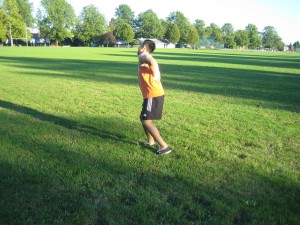Sports hernia is a painful condition that affects the lower abdomen and the upper area of the groin which is caused by injury to the soft tissues in this area. This is caused by playing certain sports. People who play sports that involve sudden change of direction or frequent twisting and turning are susceptible to sports hernia. This condition is common among people who are play high intensity sports such as ice hockey, football, tennis and rugby. There is no visible bulge that can be seen in the groin or the lower abdomen.
The affected person suffers from the pain for a long period of time and when it is left untreated, the condition can result to chronic severe pain that can be felt in the groin area which affects the performance of the individual during sports.
Causes of sports hernia
Sports hernia can be caused by an injury and tearing of the oblique muscles found in the lower abdomen. These muscles are attached to the upper end of the pubic bone, and sometimes the adductor muscles of the thigh can also be injured that are also attached to the pubis. Sudden twisting and an intense force can produce tension on the muscle tendons and they can be injured.
Symptoms of sports hernia

The affected person will experience severe pain in the groin area after the injury and may spread to the scrotum among males along with one-sided pain in the groin area. The pain is minimized when the individual takes a rest, but becomes worse when twisting, turning, coughing and resuming with the sports activities too quickly. If this condition is left untreated, the pain will linger for weeks or even for months.
In sports hernia, there is no visible bulge in the groin area as it is seen in inguinal hernia. The groin is tender when touched. Sports hernia can result to inguinal hernia and a bulge can be seen that is caused by pressure that is produced by the abdominal organs.
Treatment and home remedies
- Rest is the basic treatment for people suffering from sports hernia at least for 7-10 days after the groin tendon has been injured. Proper rest will allow the damaged tendons and muscles to heal.
- Apply ice pack at least three times a day for 2-3 days in order to minimize the inflammation. Avoid applying the ice pack directly on the affected area and make sure that it is wrapped in a clean towel before placing on the affected area. If you want to learn more about cold therapy, read here.
- Physical therapy for 2-3 weeks later should be started in order to restore the full flexibility and strength of the injured muscles of the groin. A physiotherapist will recommend exercises that will stretch the lower abdominal and groin muscles.
- Deep tissue massages accelerates the healing process of the affected area.
- Take anti-inflammatory medications to help minimize the pain and inflammation
If pain in the affected area recurs on and off, it is best to seek medical care as soon as possible.
